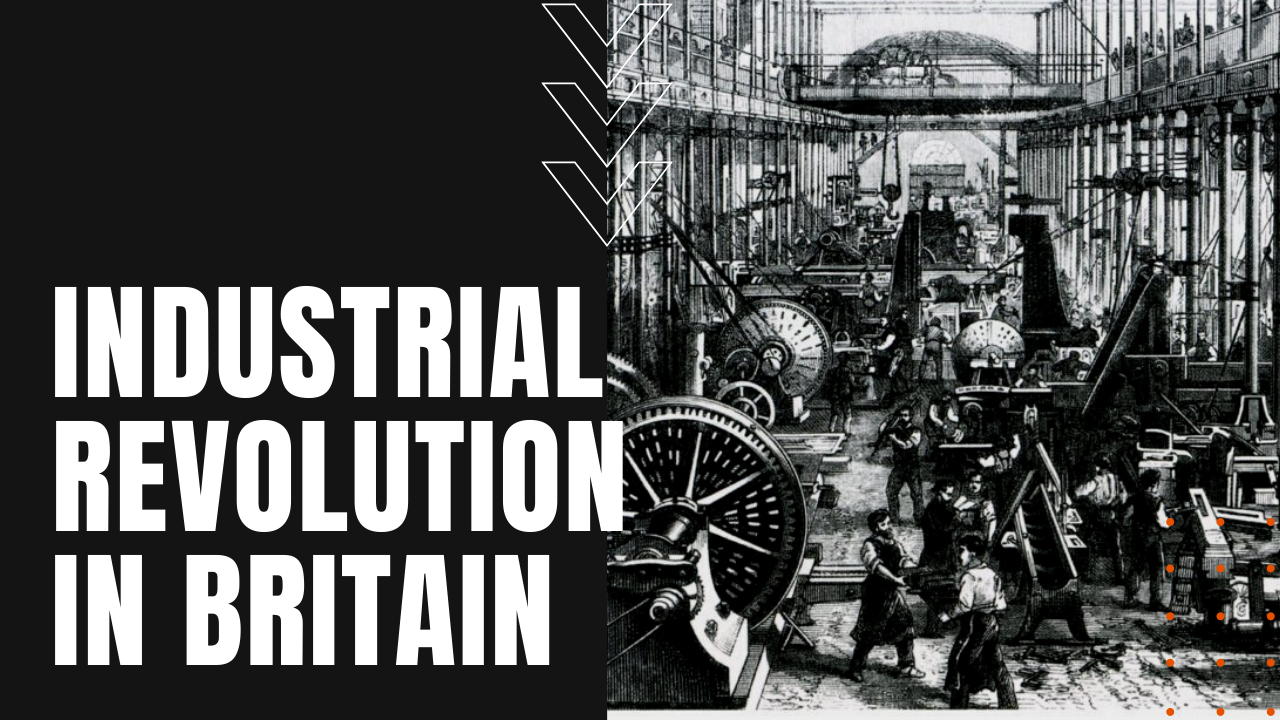The Industrial Revolution in Britain

Why Did The Industrial Revolution Start in Great Britain?
Thanks to Thomas Newcomen’s prototype steam engine designed in the early 1700s—later to be improved upon by Scottish engineer James Watt with the addition of a separate water condenser—the First Industrial Revolution in Great Britain exploded in the 1830s and 40s, in a way that transformed British life and landscape forever.
Britain’s damp climate made it an ideal haven for raising sheep, and when innovations like the flying shuttle, the spinning jenny, and the power loom came on the scene, weaving cloth and spinning yarn became much easier and faster than the pre-revolution cottage industry that required dedicated artisans.
Luddites of the Industrial Revolution
In response, some British weavers known as Luddites grew fearful that unskilled machine operators would soon threaten their livelihoods, inspiring them to break into textile factories with the intent of destroying the very machines that, in their minds, anyway, threatened their existence.
The steam engine also combined with the invention of interchangeable parts, creating a mechanized factory system that impacted nearly every form of manufacturing, which in turn allowed British industries to meet the growing consumer demands both at home and in their many overseas colonies. Demand for coal, steel and iron rose dramatically during the Napoleonic Wars of 1803 to 1815, driving thousands of British workers from rural areas into newly-industrialized cities such as Liverpool and Manchester, while the rise of large factories turned smaller towns into major cities over the short span of several decades.
The Great Divide in Britain’s Industrial Revolution
With brutally low wages, long hours and oftentimes dangerous working conditions, overcrowded cities witnessed a dramatic rise in pollution, poor sanitation and fowl drinking water, but while poor and working-class people continued to struggle at the bottom, a burgeoning middle and upper class soon benefited from wide-ranging improvements in living standards and rising incomes.
Britain’s First Industrial Revolution also ushered in improvements to roadways, rail lines and canals, creating logistic networks that vastly improved the outflow of goods from industrial hubs like never before. The Industrial Revolution also witnessed key advances in communication, when in 1837, British inventors William Cooke and Charles Wheatstone patented the first commercial telegraphy system, virtually in tandem with Samuel Morse and other inventors in the United States.
As steam-driven trains began to travel at higher rates of speed, Cooke and Wheatstone’s sophisticated communication method proved vitally important in the area of railroad signaling. Banks and industrial financiers also rose to new prominence during the period, while mechanized factory systems ushered in refined management and logistics techniques, making the Industrial Revolution a key turning point—both good and bad—in the history of Great Britain.
